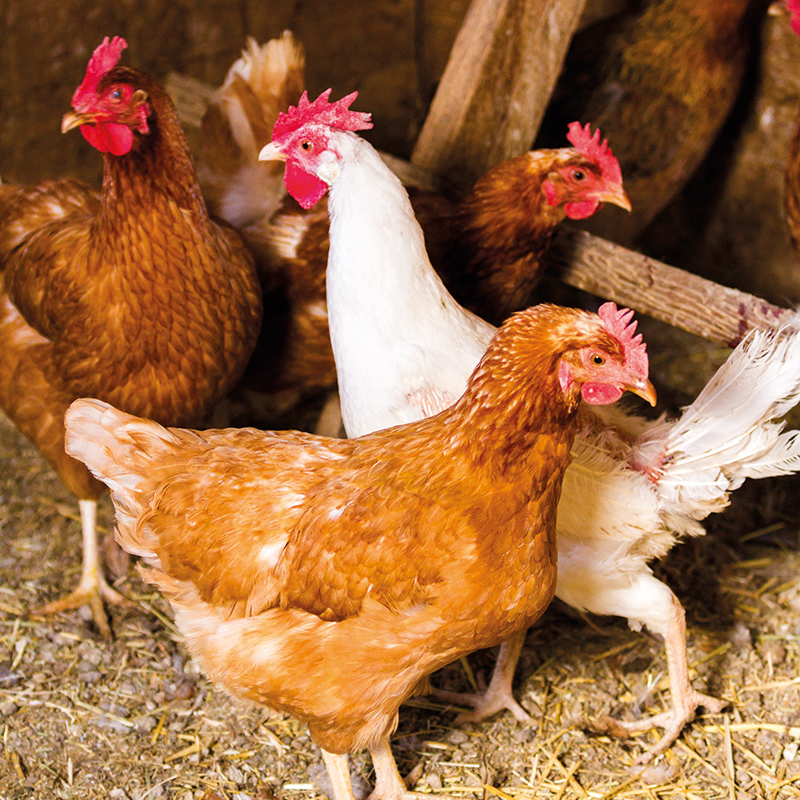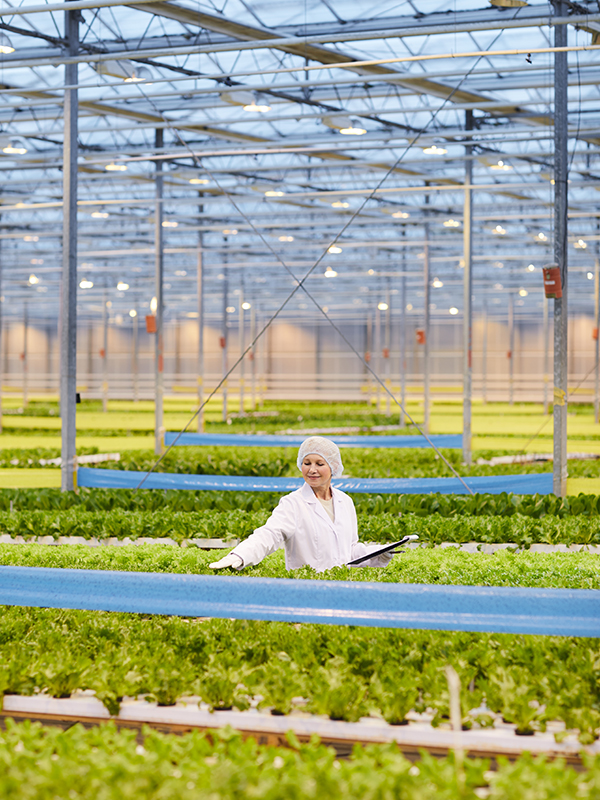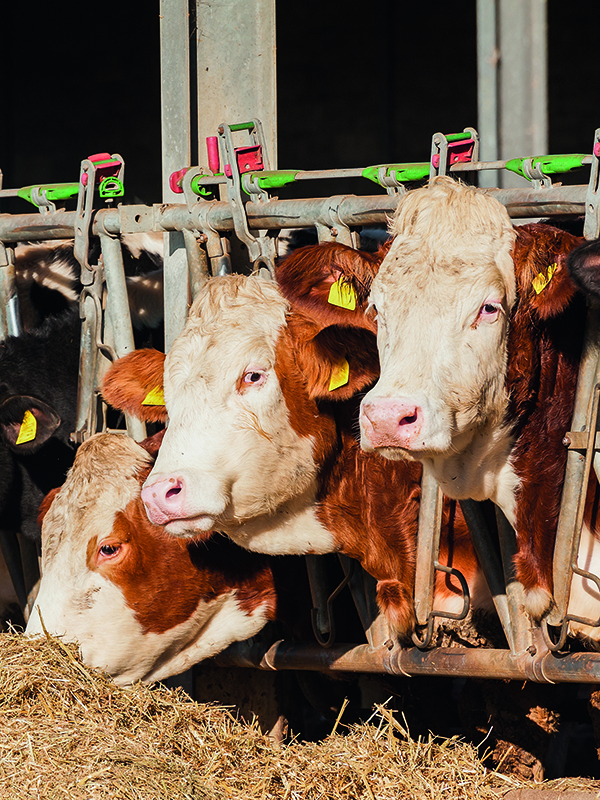FAR-UV 222nm SOLUTIONS IN AGRICULTURE
A powerful tool for improved plant pathogen control
A new era in animal and plant health
Ultraviolet (UV) light has long been recognized as an effective disinfectant. However, traditional UV-C wavelengths can be harmful to humans and animals. In recent years, there has been growing interest in Far-UVC technology, a safer and more effective alternative for various applications, including agriculture.
UV 222, a Far-UVC wavelength, is capable of inactivating a wide range of microorganisms without posing a risk to human or animal health. This makes it an ideal solution for applications in the agriculture industry and where plant health are paramount.

Agricultural yields and profitability can be significantly impacted by a diverse range of pathogens, encompassing bacteria, fungi, viruses, nematodes, and parasitic plants. The following are some key groups and examples:
Bacteria
Xanthomonas spp.: This genus of bacteria is a significant agricultural pathogen, responsible for bacterial leaf spot in a variety of economically important crops, including peppers and tomatoes. Infection by Xanthomonas spp. can lead to substantial yield losses and diminished crop quality.
Erwinia amylovora: Erwinia amylovora is the causative agent of fire blight, a devastating bacterial disease affecting some fruit trees, primarily apple and pear. This highly contagious pathogen can rapidly spread through orchards, causing significant damage and tree mortality.
Pseudomonas syringae: Pseudomonas syringae is a diverse bacterial species capable of causing a wide range of plant diseases. Notably, it is responsible for bacterial speck in tomatoes and cucumbers, impacting fruit quality and marketability. This pathogen can also affect other plant species, posing a considerable challenge for agricultural producers.
Avian Influenza (Avian Flu): Avian influenza, commonly known as bird flu, is a highly contagious viral disease that primarily affects birds.
Bacterial Infections in Livestock (Cattle and Pigs): Bacterial infections represent a significant challenge in livestock management, impacting animal health and productivity. Some notable examples include:
- Foot-and-Mouth Disease (FMD): Though caused by a virus, I’m including it here as you specifically requested it.
FMD is a highly contagious viral disease affecting cloven-hoofed animals, including cattle and pigs. It causes severe lameness, reduced milk production, and significant economic losses due to trade restrictions and animal culling.
Fungi
Fusarium spp.: This diverse genus of fungi is responsible for a range of devastating plant diseases, including Fusarium wilt and head blight. These diseases significantly impact cereal crops and other economically important plants, leading to substantial yield reductions and economic losses for agricultural producers.
Helminthosporium spp.: Fungi belonging to the Helminthosporium genus are primarily associated with leaf spot diseases in various cereal crops. These infections can significantly reduce photosynthetic capacity, impacting plant health and ultimately affecting grain yield.
Botrytis cinerea: Botrytis cinerea, commonly known as grey mold, is a ubiquitous fungal pathogen that affects a wide range of fruits and vegetables. This pathogen thrives in humid conditions and can cause significant post-harvest losses, impacting both quality and marketability of produce.
Viruses
Tobacco Mosaic Virus (TMV): Tobacco Mosaic Virus (TMV) is a highly contagious plant virus that infects a broad range of plant species, with particular prevalence in tobacco and tomato crops. Infection with TMV can result in significant yield losses and reduced crop quality due to characteristic mosaic patterns on leaves and stunted plant growth.
Cucumber Mosaic Virus (CMV): Cucumber Mosaic Virus (CMV) is a widespread plant virus known to infect a diverse range of plant species, including economically important crops such as cucumbers, peppers, and melons. CMV infection can lead to significant crop damage, including stunted growth, leaf distortion, and reduced fruit yield and quality.
Potato Virus Y (PVY): Potato Virus Y (PVY) is a significant viral pathogen affecting potato and other solanaceous crops. PVY infection can cause substantial yield reductions and negatively impact tuber quality, posing a considerable challenge for potato production.
Nematodes
Root-knot nematodes (Meloidogyne spp.): These microscopic plant-parasitic nematodes inflict substantial damage to plant root systems, disrupting nutrient and water uptake, which significantly impairs overall crop growth and yield. Infestation by Meloidogyne spp. can lead to substantial economic losses in a wide variety of crops.
Cyst nematodes (Heterodera spp.): Cyst nematodes, particularly those within the Heterodera genus, pose a significant threat to soybean production and other susceptible crops. These nematodes form cysts on plant roots, interfering with nutrient absorption and causing significant yield reductions. Their impact on soybean crops makes them a key concern for agricultural producers.
Parasitic Plants
Striga spp. (Witchweed): Striga spp., commonly known as witchweed, represents a significant parasitic plant threat, particularly to cereal crops in Africa, with sorghum and maize being especially vulnerable. These parasitic plants attach to host roots, extracting essential nutrients and water, leading to substantial yield losses and impacting food security in affected regions.
Orobanche spp. (Broomrape): Orobanche spp., known as broomrape, are obligate parasitic plants that affect a broad range of crops, including economically important species such as tomato and sunflower. These parasites attach to host roots, diverting resources and significantly reducing crop yields. Their impact on these crops presents a considerable challenge for agricultural production.
Mycoplasmas & Phytoplasmas
Mycoplasmas and phytoplasmas are cell-wall-less bacteria that can infect a wide range of crops, causing various plant diseases. A notable example is aster yellows, a disease impacting numerous plant species and resulting in significant agricultural losses.
Insects as Vectors
While not pathogens themselves, insects such as aphids, whiteflies, and thrips act as vectors, transmitting viruses and other pathogens between plants. This transmission significantly exacerbates the spread and severity of plant diseases within agricultural settings.

Improving Food Safety
One of the most significant benefits of Far-UVC technology in agriculture is its ability to improve food safety. By effectively disinfecting surfaces, equipment, and even the air, Far-UVC can help reduce the risk of contamination from harmful pathogens.
- Surface disinfection: Far-UVC can be used to disinfect food processing equipment, packaging materials, and storage facilities, eliminating bacteria, viruses, and other contaminants.
- Air purification: By purifying the air in agricultural environments, Far-UVC can help prevent the spread of airborne pathogens that can contaminate food.
- Water treatment: Far-UVC can also be used to treat water used for irrigation and livestock drinking, reducing the risk of waterborne diseases.
Controlling Plant Pathogens
Far-UVC technology can also play a crucial role in controlling plant pathogens, which can cause significant damage to crops and reduce yields. By inactivating these pathogens, UV 222 can help protect plants and improve crop quality.
- Seed sterilization: Far-UVC can be used to sterilize seeds before planting, reducing the risk of plant diseases.
- Greenhouse disinfection: Far-UVC can be used to disinfect greenhouses and other growing environments, eliminating pathogens that can harm plants.
- Post-harvest treatment: Far-UVC can be used to treat harvested produce, reducing the risk of spoilage and extending shelf life.


Benefits for Livestock
In addition to its applications in plant agriculture, Far-UVC technology can also benefit livestock, such as cattle and poultry.
- Disease prevention: Far-UVC can be used to disinfect livestock facilities, reducing the risk of disease outbreaks.
- Improved animal health: By improving the hygiene of livestock environments, Far-UVC can help promote animal health and well-being.
- Proven to inactivate Avian influenza and other air bourne viruses and pathogens.
- Anti-biotics reduction: The reduced need for anti-biotics aid improvements in anti-microbial resistance.
- Reduced costs: Savings can be made by reducing chemical use and the associated disposal costs.
In summary
Far-UVC technology offers a promising solution for the agriculture industry, providing a safe and effective way control plant pathogens, and benefit livestock. As research continues to advance, we can expect to see even more innovative applications of Far-UVC in this vital sector.
FAQs
Any further questions?
Our expert team are on hand to answer any questions about our Far-UVC solutions and how they could be best integrated within your business set up.

Registered Office: Unit 6, Old School House, School Street, Pontyclun, CF72 9FF, Wales, United Kingdom
Operational Sites: Wales, West Country & East Anglia
Company Number: 13791266
D-U-N-S Number: 228512382
VAT Number: GB 448730277